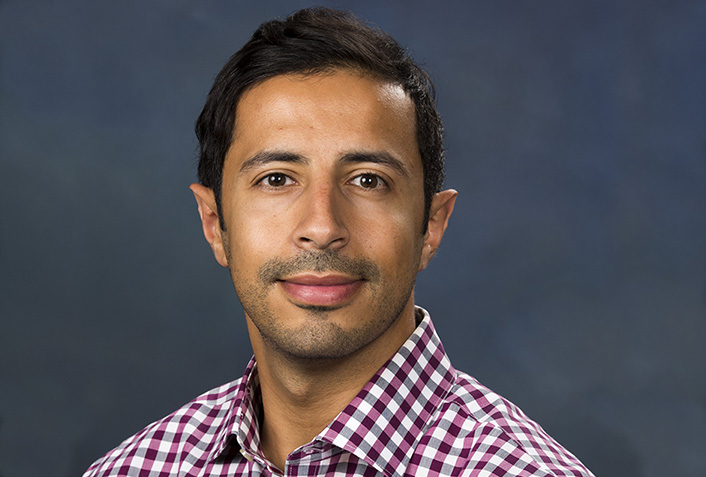Bahran honored with Asian American Most Promising Engineer of the Year Award
Contact
- Office of Diversity and Strategic Staffing

Rian Bahran, of the Advanced Nuclear Technology Group (NEN-2), has received the 2018 Asian American Most Promising Engineer of the Year Award. He is recognized for “leading the development of transformative nuclear engineering and technology solutions to the ever-increasing dynamic threats of nuclear proliferation and nuclear terrorism while simultaneously integrating vital aspects of next-generation human capital development into these technical efforts.”
“I am extremely honored to be receiving the prestigious national award,” said Bahran. “I commend both my nominators and the award committee for recognizing the vital role of engineering research and development to nuclear threat reduction while simultaneously celebrating diversity and its important contribution to innovation in the technical workplace.”
The Asian American Engineer of the Year (AAEOY) Executive Committee, which represents the Chinese Institute of Engineers–USA, will recognize Bahran and other honorees at its 17th annual AAEOY Award Ceremony. The ceremony will take place on April 7 in Albuquerque.
Latest experiments
A nuclear engineer, Bahran leads research and training efforts that cover nuclear proliferation, safeguards, security and criticality safety. He is currently part of the Critical Experiments Team at NEN-2.
“We are designing a unique benchmark experiment with kilogram quantities of neptunium,” said Bahran of one of his current projects. “This benchmark relies on measuring particle-based signatures to infer characteristics of the measured system. The experimental results of this benchmark, which we will perform at Nevada’s National Criticality Experiments Research Center, will validate our predictive computational radiation transport methods and their underlying nuclear data.”
In another project, Bahran and colleagues are analyzing results from a first-of-a-kind measurement performed in situ at a research reactor. The goal is to experimentally observe neutron clustering. Los Alamos is collaborating with France’s Institute for Radiological Protection and Nuclear Safety on this experiment.
“Clustering is a theorized effect of spatial correlation,” noted Bahran. “At very low power levels in a critical system, simulations have shown that neutrons would not be evenly dispersed and would start to form clusters. Clustering has never been experimentally observed in a nuclear system, although similar phenomena have been observed in the real world in other fields."
Inspiration for science and mathematics comes early
During his elementary school years, Bahran would go with his father to the different facilities within the Department of Physics and Astronomy at the University of Oklahoma where his father was studying.
"That early exposure to science and space exploration helped strengthen my affinity and aptitude for math, physics and chemistry," he said.
Bahran was drawn to engineering while attending the Rensselaer Polytechnic Institute in upstate New York.
“I was especially drawn to nuclear engineering because it encompassed a variety of the fundamental STEM (science, technology, engineering and mathematics) and disciplines I enjoyed,” he said. “Nuclear engineering also offered easy-to-imagine job prospects in the application of its underlying sciences."
In his junior year of college, Bahran decided to pursue a career tackling real-world national security problems instead of focusing on basic scientific discovery. He joined Los Alamos in 2013 as a postdoctoral researcher.





